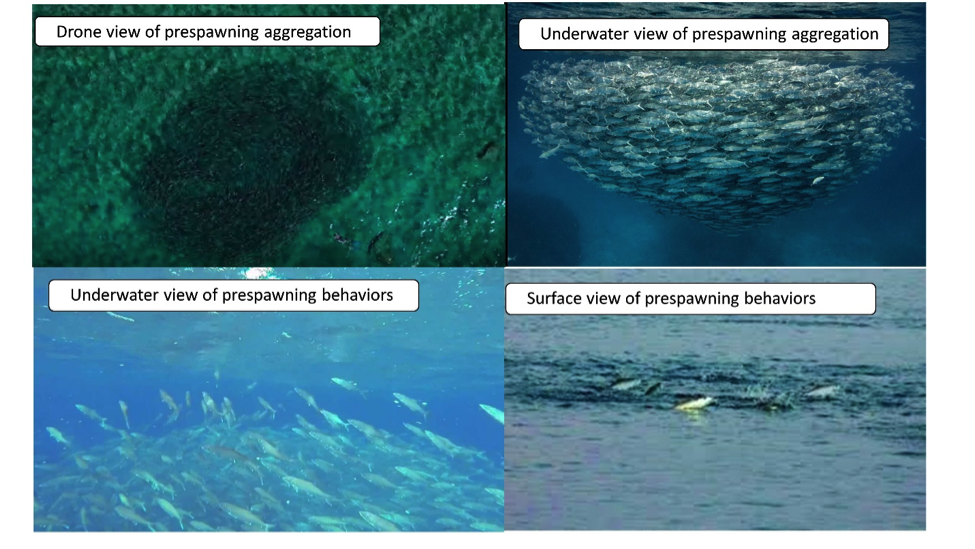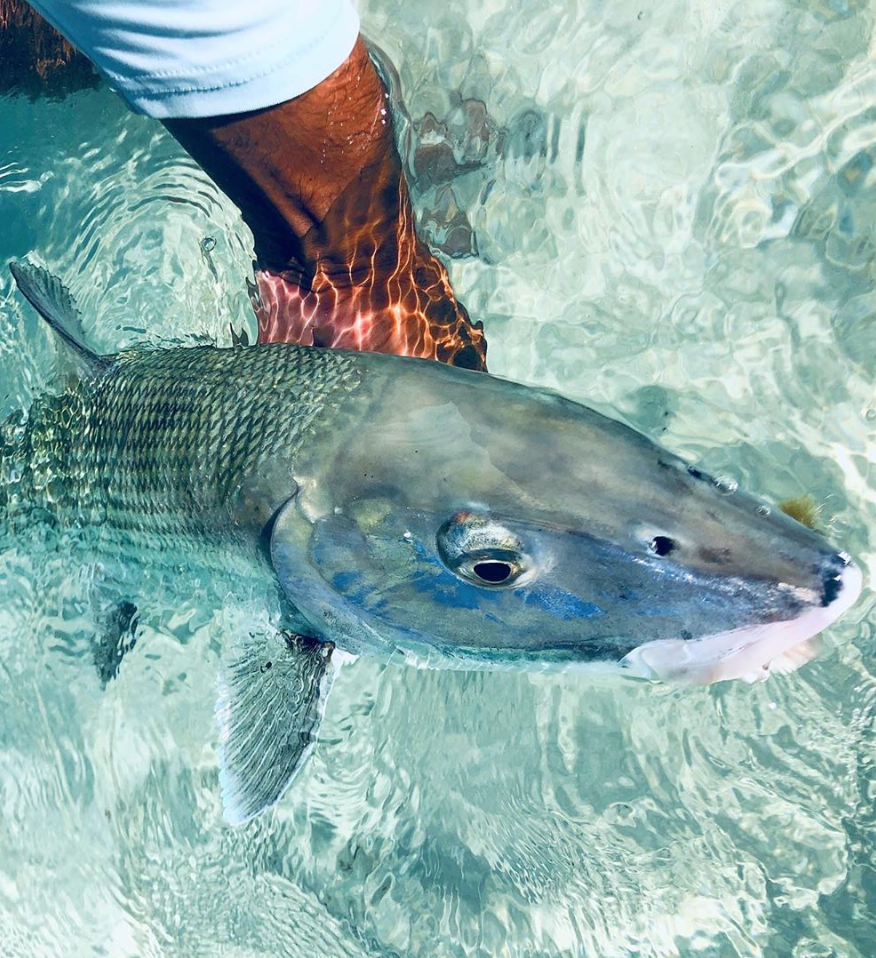Photo: Justin Lewis
This series of blog posts will summarize five exciting discoveries about bonefish biology made by Bonefish & Tarpon Trust and our collaborators over the past 20 years. And be sure to tune in to BTT’s Facebook feed this Friday, April 10, at 12 pm EST. Dr. Ross Boucek, BTT Florida Keys Initiative Manager, and Justin Lewis, BTT Bahamas Initiative Manager, will be discussing BTT’s bonefish discoveries live and answering your questions!
BTT’s approach to conserve bonefish involves learning where all of the habitats bonefish use throughout their lives are, including where they spawn, where the juveniles are, and how much flats habitat the fish need, so we can protect those areas, and make sure the fish are safe. Our science-based approach informed the development of six national parks in the Bahamas and catch and release best handling practices now widely used.
#1 Bonefish are a small fish with big time spawning migrations.
Before we started researching bonefish, we didn’t know where or how they spawn. In fact, most of the old-timers thought bonefish spawned on the flats. With the help of guides and anglers who tagged over 20,000 bonefish with dart tags across the Caribbean, we learned that bonefish have generally small home ranges, but in the winter and spring migrate great distances (up to 70 miles) to specific sites, where they gather by the thousands and engage in pre-spawning rituals. In the evening, that aggregation migrates to blue water, where they dive to depths of over 200 feet to release their eggs in open ocean currents. Captains and anglers call us once in a while about finding bonefish in swordfish stomachs. And, in other places, bonefish are used as marlin baits. Their spawning migrations to the deep blue, may explain this phenomenon. Learn more by clicking HERE.





